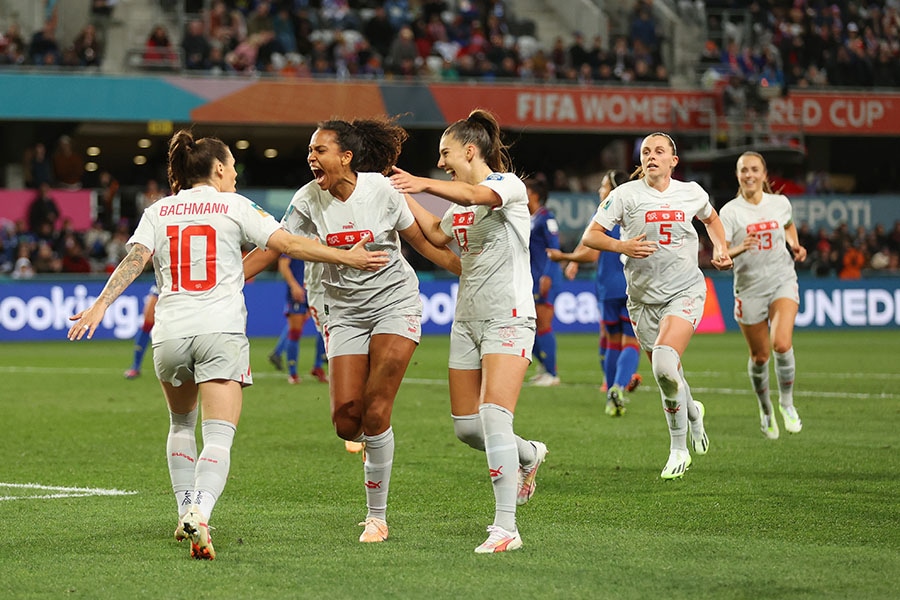
How women in sports are forever playing catch-up
The fight for equal pay in sports has spanned generations and disciplines. Despite the victories that women have notched up, there are miles to go
 Ramona Bachmann (1st L) of Switzerland celebrates with teammates after scoring her team's first goal during the FIFA Women's World Cup Australia & New Zealand 2023 Group A match between Philippines and Switzerland at Dunedin Stadium on July 21, 2023 in Dunedin, New Zealand.
Image: Lars Baron/Getty Images
Ramona Bachmann (1st L) of Switzerland celebrates with teammates after scoring her team's first goal during the FIFA Women's World Cup Australia & New Zealand 2023 Group A match between Philippines and Switzerland at Dunedin Stadium on July 21, 2023 in Dunedin, New Zealand.
Image: Lars Baron/Getty Images
The International Cricket Council (ICC) has recently announced equal prize money for both men’s and women’s teams at ICC events. It’s a historic step given the pay gulf that exists between the two genders.
Consider that England won $1.6 million in prize money for winning the men’s T20 World Cup, while the Australian women’s team won $1 million for the same trophy.
It’s not just in cricket. Pay disparity is a lingering issue across generations and across most professional sports.
For example, the $150 million prize money in the Fifa Women’s World Cup, which began in Australia and New Zealand on Thursday, is a 300 percent hike over its 2019 edition. But it still remains only about a third of the $440 million that the men got in the Qatar World Cup last year.
According to Basketball Reference, in 2021-22, NBA players earned an average of $5.3 million a year, with superstars like Stephen Curry making $45.7 million. In comparison, the Women's NBA players earned an average of $130,000 a year with the highest-paid players making about $230,000.







